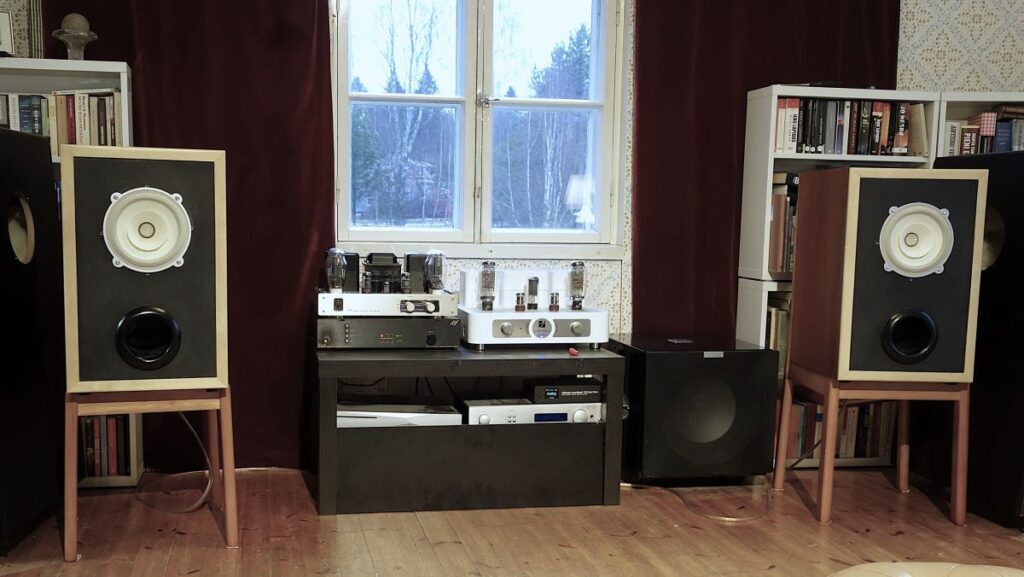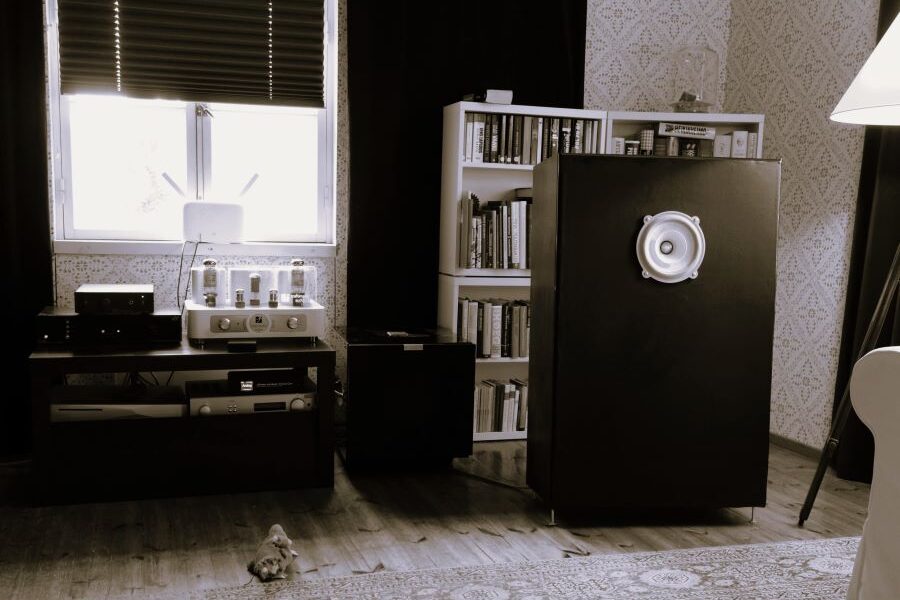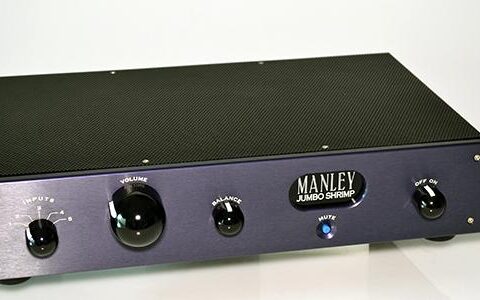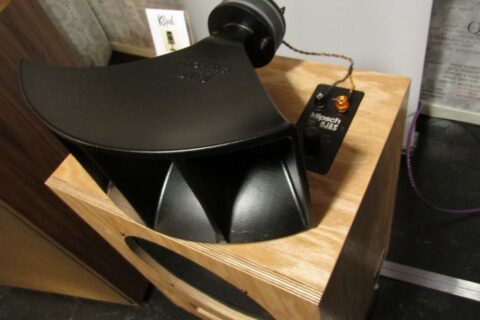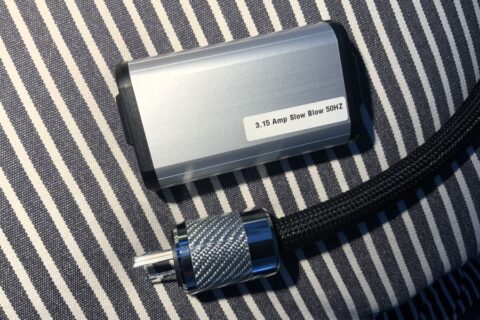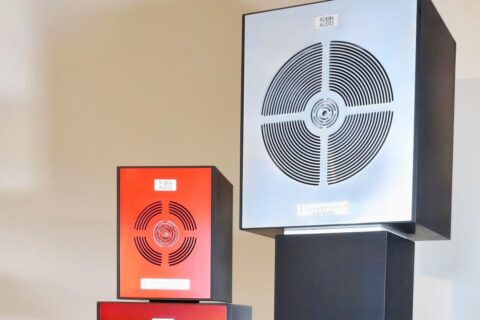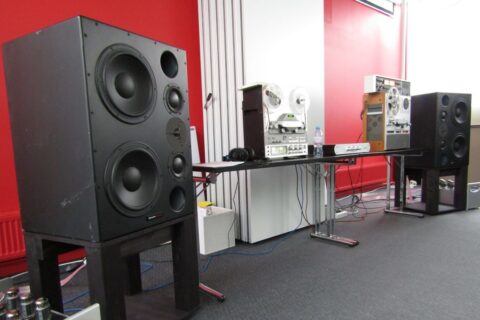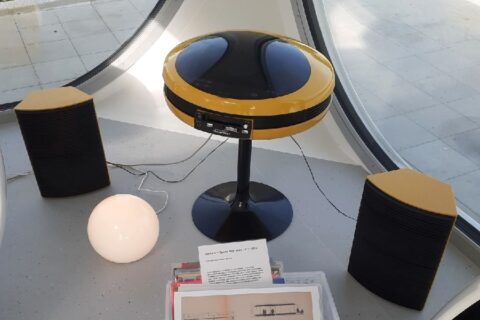Tapio Suonperä is an experienced audiophile who likes to strive for a perfect sound by experimenting with speaker enclosures, tubes, components, and what have you. I’ve known Tapio since he got his first pair of PHY widebandwidth drivers more than twenty years ago. Having been an owner of PHY drivers myself for some years, I told him that he would now have one of the finest driver ever known to the history of audio, but that he would face hard time in making them work in a cabinet. That’s exactly what happened. During the past 25 years Tapio’s been making numerous experiments with different wide bandwidth drivers starting from 8” and 12” PHYs, then moving to Featrex & Supravox combo, and ending up with Voxativs. So it’s time for an interview.
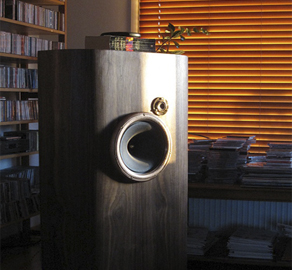
THE PERIOD WITH PHYs
INNER: Tell us briefly about your speaker hobby before widebanders entered into your life?
TS: In the 60s, I had all kinds of DIY setups, mainly with SEAS and Peerles drivers, often but not always with a double-cone. Sort of widebandwidth speakers, but they didn’t really produce much of the top end. The first real speakers I had were the KLH 17s in the early 70s. The AR 12 was also around for a long time, until the upper suspension completely crumbled and had to be replaced. The Mirage standmount model was on the shelf, as was the Proac Response 1S, and with them the first appropriate stands. Then came Dynaudio’s Contour 3.3, a large floorstander, Wilson Benesch ARC, a smaller Magnepan … and finally, a DIY-based Ariel 6.1 transmission line loudspeakers.
INNER: And where came the inspiration to start experimenting with true widebandwidth drivers?
TS: The sound of traditional hi-fi speakers, mostly two-ways, just didn’t evoke the emotions I thought it should. Even at its best, their sound was somehow lacking on an emotional level. They didn’t create the illusion of liveliness. A memory from the 1960s told me how lively an older paper cone driver sounded even in a primitive speaker cabinet. As a kid, we used to look for old radios in the nearby Tali dump, and we found them. The drivers were torn off, but also tubes and transformers. Some of the drivers, for example those taken from large Telefunkens and Sabos, were really good. Sometimes the old radios had separate cardboard cone tweeters. The year 2000 was a clear turning point in my long-standing hobby. That was when single driver widebandwidth speakers and low-power tube amplifiers came into the picture more strongly.
Another motivation originated in 1998, when I moved into a new apartment, which turned out to be quite challenging in terms of sound reproduction. The building was brand new and represented the ideals of concrete house construction of the time with its hollow core slabs and space planning. The rather large, multi-layered and asymmetrical living/listening room containing the kitchen/living room caused many kinds of acoustic problems. One side wall was mostly a window. The other was completely missing, opening through the hallway into a rather small library hall. The major problem sonically was the bass response at the listening position, its unevenness at several frequencies. There was also a certain discontinuity in the midrange. I tried different placements, different operating principles and different size speakers, but wasn’t really satisfied. It was then when the ARIEL-6, which had gained recognition in DIY circles, and already sounded pretty good, had to go. Something essential was missing.
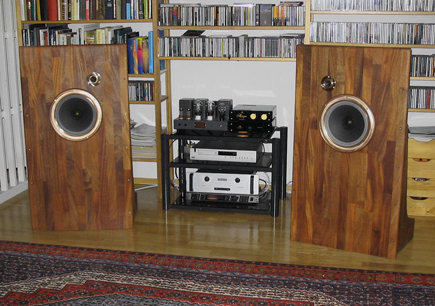
INNER: So the time and cicumstances were ready for PHYs? Two models actually?
TS: Yes, somehow I got the idea that I should try open back baffles. For the purpose, I first acquired used PHY’s 8-inch drivers, and studied instructions and drawings on the internet for dimensioning the baffles. Based on the instructions, I designed speakers for the smaller PHYs hoping that the baffle construction would solve a large part of the problems I came across with closed or reflex box speakers. It turned out that in my listening room, an 8” full-range driver in a rather small baffle worked best. A bit surprising. Maybe not now, but at the time. That was a beginning for all the later experiments with widebanders.
INNER: What were your first impressions of the PHY drivers? Was there something particularly good about them?
TS: The PHYs revived memories of my youth. The 8-inch driver in particular sounded good. When measured by music, they had a certain authenticity that I had been looking for. That authenticity probably came from coherence, speed and sensitivity. I was also tired of the more or less “plastic bucket sound” of some of my previous speakers. The paper cone also colors the sound, but much more pleasantly than the polypropylene that was common at the time. And the PHYs are very affective speakers. The dynamics at moderate listening volumes was also pretty good.
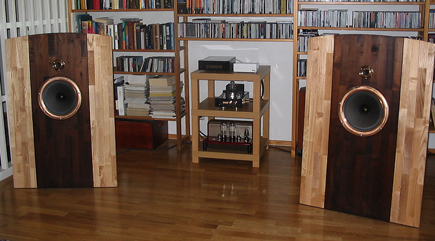
INNER: Yet you quite quickly went for the larger 12″ PHY H30 driver and the TW 37 piezo tweeter?
TS: Yes, the PHY 12 incher replaced the 8-incher quite soon, mainly because there seemed to be a slight deficiency in their top end for my taste, which manifested itself as a some kind darkness of the ambience and a slight lack of airiness. The sound of the saxophones and strings also lacked that very last edge. The certain ‘dullness’ that I had liked in the beginning started to sound more ‘closed’ over time than I would have liked to. So, a little more openness for the entire band was on demand.
INNER: And the bass?
TS: I really liked the quality of the bass, but to bring out the very lowest frequencies, the size of the baffle should have been considerably bigger. I also tried it with the bottom plates of an old large waterbed. It didn’t really work. There was some bass, but the amount of upper bass increased too much. In various baffle experiments, one of the goals was to maximize the lowest bass without causing any disturbances at the upper frequencies. So it was largely a matter of finding a suitable compromise. The height of the driver from the floor was about 60 – 80 centimeters to reduce floor reflections, and to get the stereo image at the right height. The width of the baffle ended up being about 75 – 80 cm, slightly depending on the height of the driver. With those dimensions, the bass extended neatly to about 50 hertz, practically stopping at 40 hertz. That was enough for acoustic jazz and chamber music, as well as rock. But I wanted to hear the bass and the big sounds of a symphony orchestra. I tried different sides and wings, but they had their own known problems, and I gave up on them.
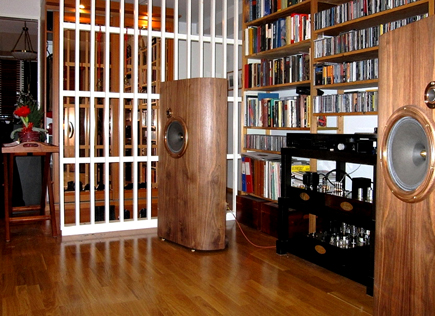
INNER: Your open back baffles were differently sized and shaped, with or without wings etc., but also all made of different wood, and differently damped. Tell us more?
TS: I first had mahogany baffles, which actually sounded quite good. Especially with my 2A3 SET amplifier, the mahogany baffle created a great synergy. The problem was that the bass was a little too thin initially due to the rather narrow, 63 cm wide front panel. In addition, there was that slight HF roll-off that I mentioned. The mahogany was also apparently too fresh when I started working on it. I should have let it dry for a year or two first. Small cracks began to appear on the edges of the baffle, which I feared would cause distortion. Perhaps in vain, because the sound was great.
INNER: And later?
TS: Of the later ones, two open-back baffles pop up from the crowd. The first one was made of 26 mm ash, measuring 76 x 110 cm. It had perhaps the most neutral sound I’ve ever heard from the PHY 12-incher. The bass was of good quality despite a slight upper bass emphasis. Clean sound, no excessive accentuations or bumps in any frequency range. Some listeners considered it my best PHY baffle. I personally found the sound a bit colorless given that I knew what those drivers were capable of.
INNER: And the other one?
TS: I set out to obtain more liveliness with a lighter baffle structure. I designed and made an asymmetrically bent baffle made of 4 mm birch plywood. The dimensions were about 82 x 115 cm. On the rear side there was an irregular support grid, also made of 4 mm plywood. The structure was light but stiff. The sound was interesting, to say the least. Lively, fast, rhythmic and at first quite colored. Also somewhat restless in the midrange. However, that restlessness and coloration were relatively easy to control with appropriate damping of the support structures and the front panel. I used quite light damping, pieces of blue tape and polyester wadding on the inside, because I didn’t want to kill the sound’s livelyness. In retrospect, a slightly stronger damping would perhaps have been in order. There were still some unevenness in the sound, which appeared as a slight rise in some frequencies.
While the ash baffles were generally liked, my lightweight baffles divided opinions more sharply. Many thought they were really good. Some thought they were absolutely horrible. That perhaps says something about their special sonic nature. They certainly did not represent any conventional Hi-Fi. I myself sometimes felt a little ambivalent about this solution. And they were quite a personal revelation in terms of appearance. So all in all, the one made of ash was perhaps the best of my PHY baffles, the most neutral sounding. The thin but rigid birch baffle sounded fast, lively and rhythmical but also somewhat colored.
FEASTREX & SUPRAVOX
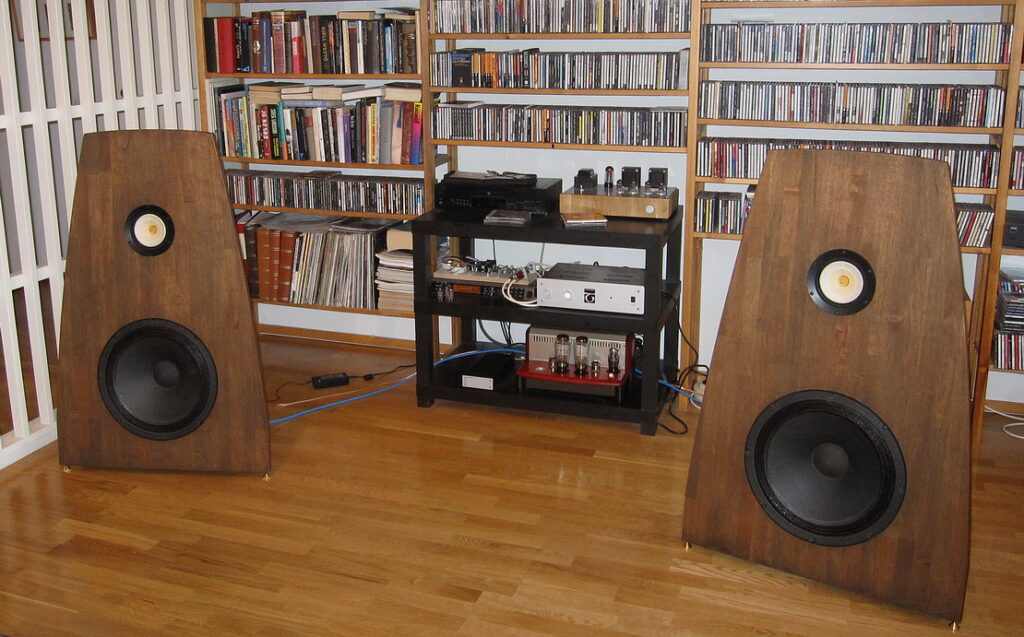
INNER: Then it was time to split the frequency range in two, go back to the starting point, so to speak. Tell us how you ended up with your next widebandwidth speakers?
TS: The main deficiencies of all the PHY baffles were related to the control of the bass in the room and lack of edge and sparkle at the other end of the frequency spectrum. But I could have still lived in harmony with the PHYs and continue developing the baffles further. In fact I feel that I could’ve improved them even more. The mahogany baffle especially was as good as it could get, with the dimensions I chose. But hobbyists as we are I wanted to try something completely different. So I ended up choosing the Feastrex & Supravox combination.
INNER: How come?
TS: The five inch Feastrex D5 NF was an easy choice based on several in-depth online articles, but I spent a long time searching for a suitable woofer. The best option I found was 16 inch Supravox field-coil woofer. The requirements were power/cone weight, low resonance, high sensitivity, sufficient surface area, flat frequency response between 25 – 400 Hz and a Qt value suitable for the baffle, between 0.5 – 1.2. Based on those factors, the Supravox 400 EXC became a clear number one choice. The magnet adjustment option is a great thing and came as a bonus.
INNER: Active bass?
TS: Yes. I wanted to make the bass active, because I think it was the best way to get the bass under control in my acoustically less optimal room, and do it with the dimensions of the baffle that would be humane. As for the Feastrex, I wanted the simplest possible “old-fashioned” high-pass filter. I initially settled on a second-order Bessel filter, and a crossover frequency of 275 Hz. I did not want to use any impedance, response or other extra corrections. As I continued listening, the filter became simpler. I removed the filter from the Feastrex and lowered the bass filter to become first-order with a crossover frequency of 160 Hz. I had a feeling that it would add more liveliness to the crossover frequency range.
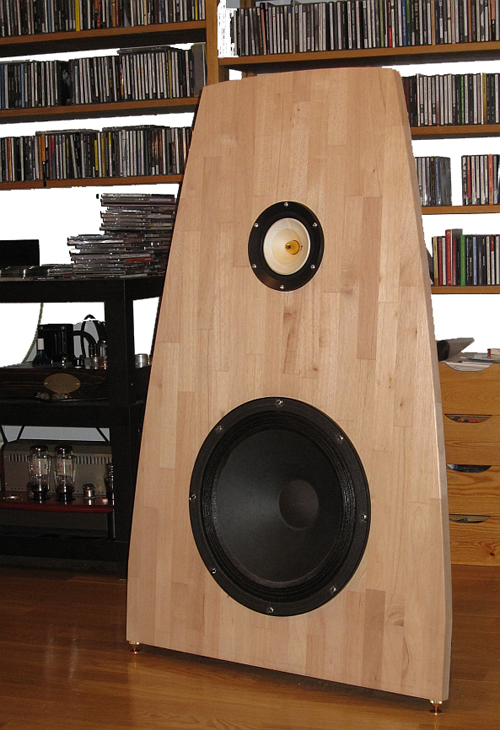
INNER: Still a baffle?
TS: Yes. First, I made a baffle out of some tropical hardwood. The bass was punchy, but the Feastrex sounded quite ugly. I sawed the baffle across the top of the woofer and attached a pine board of the same size in its place. The sound became completely different. Now the problem was the slight extra liveliness of the pine baffle. To dampen it, I have found a good way to glue small, heavy ceramic or stone tiles to suitable places with a flexible mass, for example silicone. A few small tiles settled the excessive liveliness.
The baffle narrowed upwards for the sake of elegance. But since I had made a design error in the dimensions of the baffle, it was too narrow for the Feastrex. This caused the driver’s response to slowly decrease before the intended crossover frequency, and a deficiency arose in the 200–300 Hz range that could not be corrected by electrical means. The effect was audible, for example, as the thinness of the male voices and as a slight weakness in the left hand of the piano. I made a new baffle that was 15–20 centimeters wider than the Feastrex and the problem was disappeared.
The new baffle was made of inexpensive cedar. The sound was surprisingly different from the pine. The pine sounded softer and a little livelier. Cedar was lively but not quite as lively, and it produced is a little louder sound in the upper register. This was clearly heard as a stronger presence of different percussion instruments. I can’t say which wood sounded better. Both had their advantages.
INNER: What do you think causes the differences between different types of wood panels? After all, the driver’s are mechanically relatively stiff and dead?
TS: Just press your ear onto the baffle’s surface when playing music. A surprising amount of vibrations can be heard, no matter how damped the driver or the baffle is. Different types of wood resonate differently here depending on their properties.
INNER: Did you ever consider any other type of enclosure?
TS: Not really. I have a preference for dipole speakers because I’ve not achieved their openness and enclosure-free non-coloration with other speaker types. The bass problems in my listening space also seemed to be most easily solved with that type of enclosure. I listen at reasonable volume levels and I don’t miss the physical kick that a closed enclosure brings at high levels. And the response was wide enough. The speaker reproduced 25 Hz with a nice power. 20 Hz then sounded already damped, although the test record made the windows rattle when I turned it up louder. So there was still some energy there.
Also, the speed and trackability of the bass line was excellent. Qt 0.6, which was selected by listening, gave a suitable combination of softness and punch in my system. I could adjust this with the magnet voltage. I adjusted the interaction of the active woofer and the passive widebandwidth driver in the crossover area over several months of intensive listening.
INNER: And the electronics?
TS: The crossover for the woofer was implemented actively using the Behringer Ultracurve DEQ 2496 as a low-pass filter. It is excellently suited for this task. Due to the “narrowness” of the baffles, a dipole correction from 80 Hz downwards of approx. 6 dB/octave was included in the low-pass filter. At the same time, the obvious imperfections in the room response were smoothed out. I considered the end result very successful in this respect. I didn’t make any academic measurements. All planning and adjustment were based on auditory observations at the listening position. Other pairs of ears have been involved at different stages.
INNER: What were the obvious sonic advantages of the Feastrex & Supravox compared to the previous ones?
TS: These speakers were slightly better than their predecessors in every respect. Airiness, accuracy, separation and edge could be found in an unstressed whole. The midrange was pleasant in an unadorned, honest way. And the bass, as I’ve probably mentioned before, could not have been better. I was very satisfied with the whole.
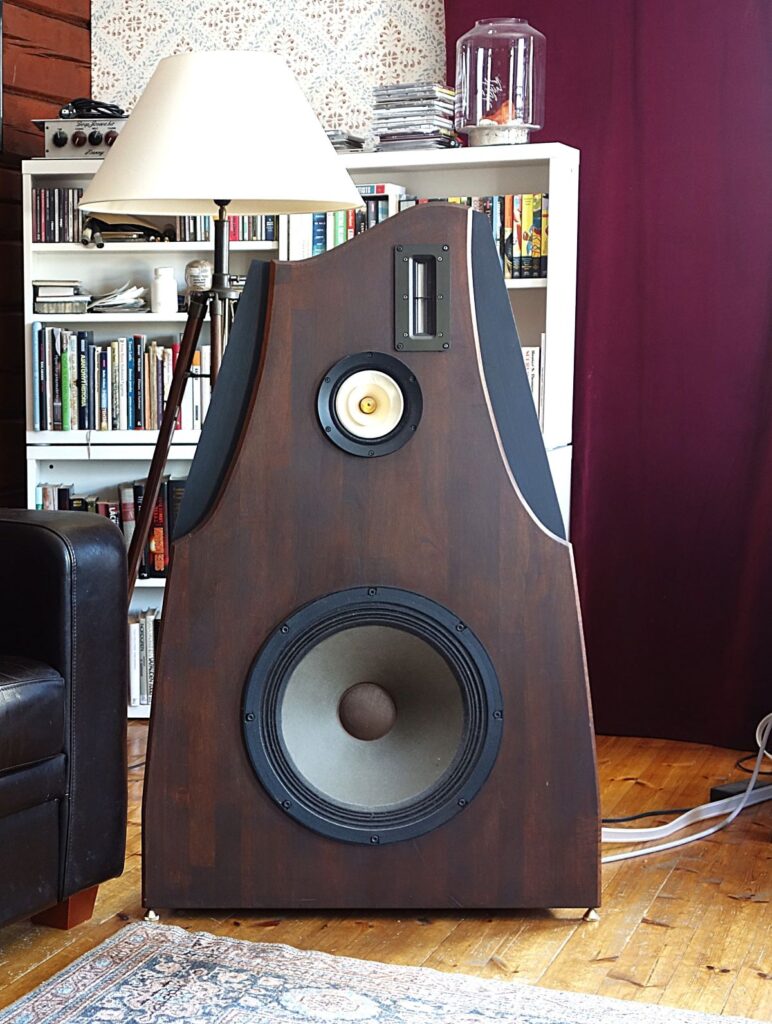
INNER: Sure? Nothing to complain about?
TS: I could have tried to find a way to add a little bit of that PHY pine baffle pleasantness to the sound. I thought of milling a large area of the back of the Feastrex to make the cedar quite thin and glue a similar piece of pine board in its place, hoping to have the speed and precision of the cedar at the top combined with the slightly softer sound of the pine.
INNER: What kind of electronics did you use at the time?
TS: The CD player was an old Sony. I had several DACs, eg. Buffalo Sabre 32 DIY DAC. The preamp was a slightly modified Transcendent Grounded Grid, the active crossover Behringer DEQ 2496 Ultracurve, and the amp for the Feastrex is a Yamamoto A-8 S with EML 45’s output tubes, the amplifier for the Supravox woofer was Lehmann Stamp transistor amplifier. I already knew that Yamamoto was good. That’s why I bought it for this specific purpose. The Lehmann happened to be on sale for a good price. It could have been just as well a cheap NAD or Rotel driving the low end. But the Lehmann worked really well there.
INNER: I think I heard the Feastrex/Supravox system once, and the sound was excellent. It was the kind of sound that has been matured for a long time. I also noticed that you were not interested in realistic volume levels but rather sought life-likeness through reproducing musical details and the space at moderate volume levels from a rather short listening distance. Am I at all right?
TS: You’re absolutely right. I use fairly reasonable listening volumes. One important starting point in putting the systems together has been that different aspects of music would be conveyed authentically even at lower sound pressure levels. Not an easy task.
INNER: So do I understand you correctly that the Featrex & Supravox system was not as choosy about the music as your PHY systems were?
TS: It came as a pleasant surprise that the Feastrex & Supravox system reproduced music on a wide scale, and was less hardware depending than my previous baffle speakers. Good music from Bach to John McLaughlin to Opeth worked well for my daily listening.
VOXATIVS – PAST TEN YEARS OR SO
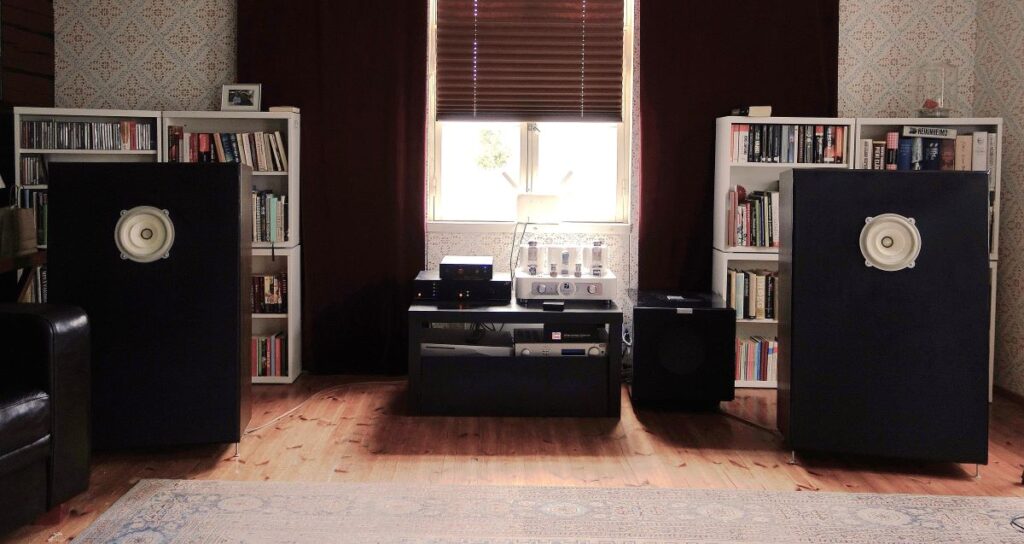
INNER: So, you had found a mix of baffle speakers and electronics that worked fine for your purposes and taste – and acoustics. But, once more, that was not the end of it. What exactly motivated you to move onto the next speaker and the subsequent electronics?
TS: A good question. I’m not sure that I know myself. I think there were more than one reason, and it was a combined effect of those reasons that made me make the next move. I really was satisfied with the Feastrex & Supravox baffle for a long time, as I was with the PHYs, and instead focused on developing other parts of my system. However, one day a friend of mine told me that he had acquired Voxativ AC-3B drivers, and designed and built 1.2 m high tapered horn type enclosures for them, and that he whipped them with a KT120 PP tube amplifier. So I went to listen to it, and was blown away! They really suited my taste. There was enough of everything, and nothing too much. Everything tasted very high quality. While listening to them, I quickly came to the conclusion that behind that great sound must be Voxativ’s
drivers, which clearly benefited from the horn enclosure and tube amplification. It was then that I decided that I had to get hold of a pair.
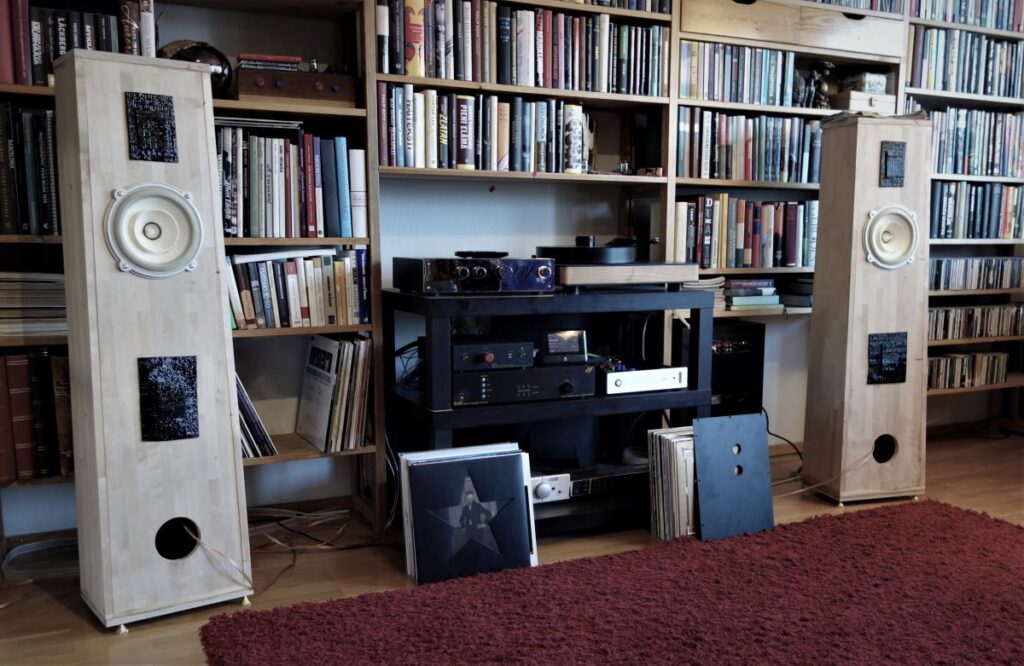
INNER: And that was it?
TS: Perhaps another significant factor behind my decision was that I did not have to take any risks. I had heard the speakers with my own ears, and determined their suitability for myself. Also, I had a new listening room in a log-framed wooden house with better acoustics, and that gave me the enthusiasm and courage to develop a new and better loudspeaker.
INNER: So where did you managed to buy the Voxativ widebandwidth drivers?
TS: My friend who introduced his Voxativs to me, wasn’t 100% satisfied with them. So he bought another Voxativ model with a lower Qts to get snappier and brighter response, and he got exactly what he was looking for. I liked his first pair more because of its more relaxed and softer sound. To me it was bright enough and snappy so I offered to buy the first pair. We made a deal and I became the owner of Voxativ AC-3B, and am still happy!
INNER: And the cabs? Voxativs are not that often seen in open back baffles.
TS: At this point, a little luck came into play. Another hobbyist and friend of mine had also acquired Voxativ’s drivers, and massive floor-horn type enclosures for them. In his intimate and cozy listening room, those 250 liter lumps began to look unnecessarily large and he decided to give them up. So the drivers traveled to Central Europe, and the enclosures remained for me to find.
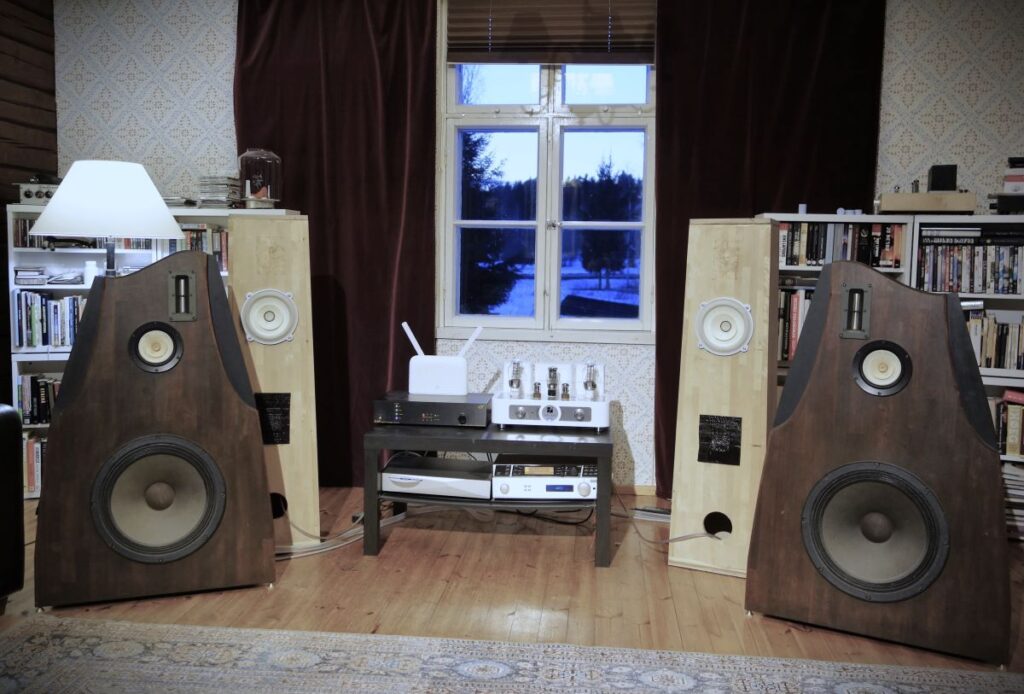
INNER: So it was Voxativ AC-3B’s in Floorhorns. Did you ever manage to compare it with the Feastrex & Supravox combo?
TS: I did manage to compare but first not with Floorhorns. At some point, Voxativ AC-3Bs in their tapered horn enclosures also moved to my place, the purpose being to compare it with the Feastrex & Supravox baffle and determine their mutual superiority. The amplifier was a Trafomatic with EML 300B mesh plate output tubes. The winner of the comparison would become the trump card of this listening room.
That comparative listening was not a piece of cake. In my new listening room the Feastrex/Supravox combo, lightly reinforced with ribbon tweeters, worked perfectly when the bare surfaces of the room were suitably covered and the bass levels were set correctly. Both pairs of speakers sounded great. The space and the amplifier used were perfectly suited for sensitive widebanders. It’s not that there were no differences, but evaluating the speakers based on them was surprisingly tough. In the end, I made a decision: I found the Feastrex/Supravox combination to be slightly better sounding. However, I suspected that it had gained an unnecessary competitive advantage from the presence of the 16” Supravox woofers in the same baffle, and the active amplification of the bass and the low-pass filter. So, by unanimous decision, I declared the Voxativs the winner of the driver comparison. I already had a buyer for the
Feastrexes, so I carefully removed them from baffles and delivered them to their new owner.
INNER: But a tapered horn ain’t a floorhorn?
TS: I know but I had already auditioned the Voxativs in a large floorhorn enclosure in my old listening room, so I kind of knew they would work great together. The floorhorns I had bought earlier had already been moved to storage in the new listening room to wait for the drivers. Before going for the floorhorns, I still decided to try the Voxativs in place of the Feastrexes in my old baffles by making the mounting hole fit for the Voxativs. And they sounded fine, really well, once the level of the Supravox woofers was adjusted to the right level from the low-pass filter.
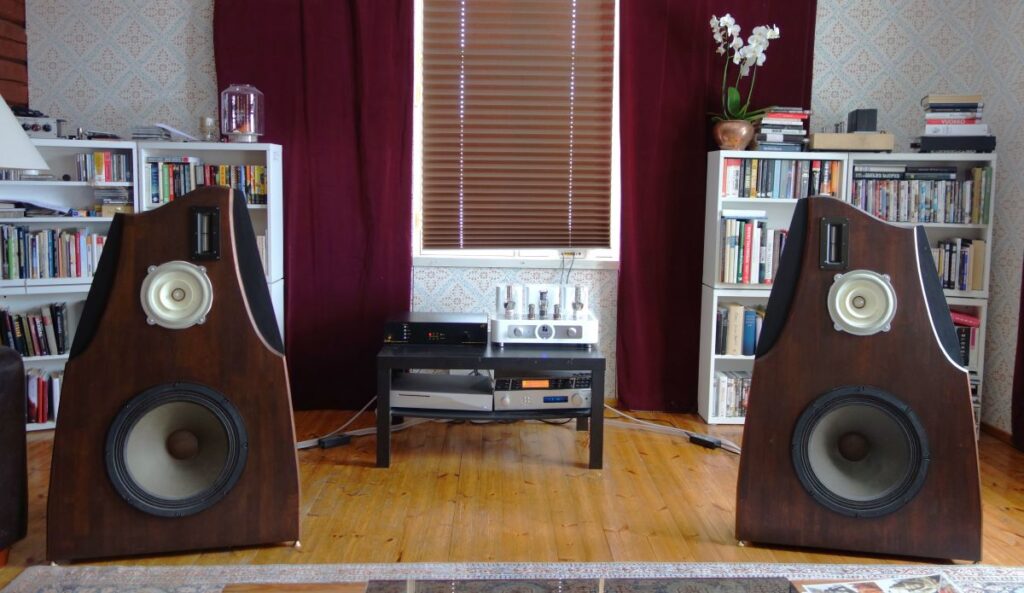
Then it was time for the final comparison. I took the drivers out of the baffle and firmly attached them to the front panel of the floorhorns. And yes. When I got the speaker cables connected and the amplifier switched on, the miracle, that all serious Hi-Fi enthusiasts dream of, happened. A small pinch of golden fairy dust floated from somewhere in the ceiling!
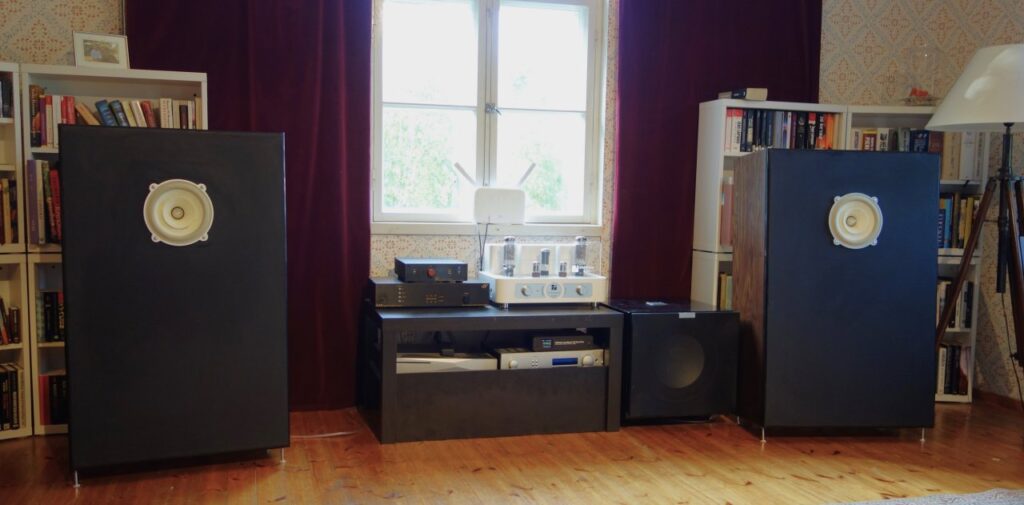
INNER: So what is your present system, and how does it sound?
TS: I’m streaming all my music in hi-res. I’m using Qobus and Tidal as servers. The streamer is Innuos Zen Mk.3. Dac is EAR Dacute 24/192. My main amp is Trafomatic Experience 2. Loudspeakers are Voxative AC-3B in big floorhorn boxes. I have also REL 812 subwoofer which is connected via DSPeaker Anti-Mode 2.0 Dual core digital processor, but I don’t really need a sub.
How does it sound? Well, let’s assume that this is the end point of a long journey. I think I would be quite disappointed if it wasn’t very good. I am not disappointed. Why is it so good? It is made for my taste and ears only. It sounds natural, balanced and sweet. The sound hasn’t got any special character, just musicality, whatever that means.
INNER: Given your numerous experiments with different baffles and enclosures and various wide bandwidth drivers, could this system have the quality of being the so called final system?
TS: Yes! Absolutely.
Thanks Tapio!
